In Thai mythology and culture, the Garuda is a prominent and highly revered mythical creature. The Thai Garuda, known as “Phya Krut” or “Krut,” is a bird-like creature with a human body and a bird’s head. It is often depicted as having the wings of an eagle or a hawk, and it’s usually shown with sharp talons and a beak. The Garuda is one of the most significant mythical beings in Thai folklore, and it holds a special place in Thai Buddhism and royal symbolism. Himmapan Forest
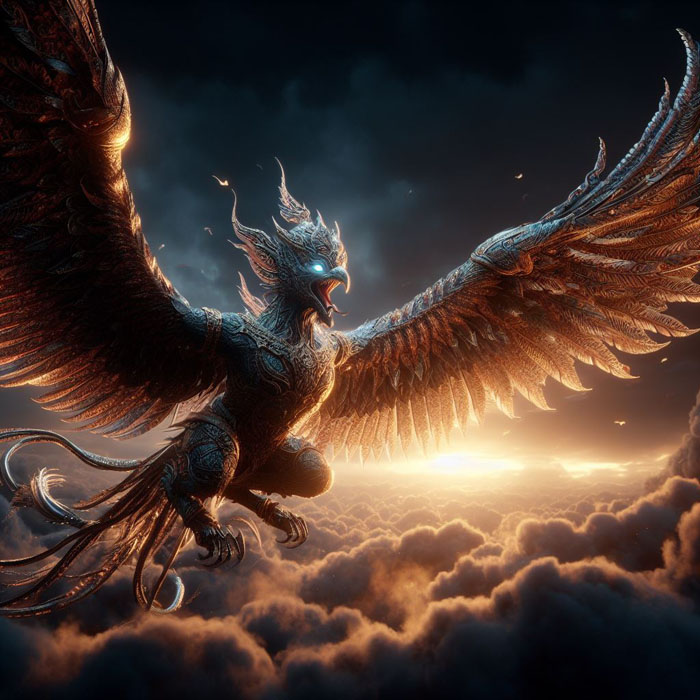
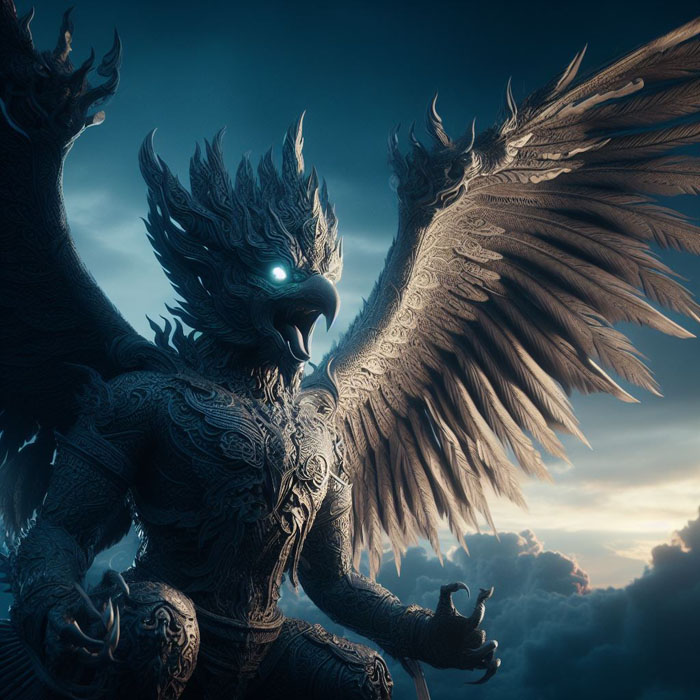
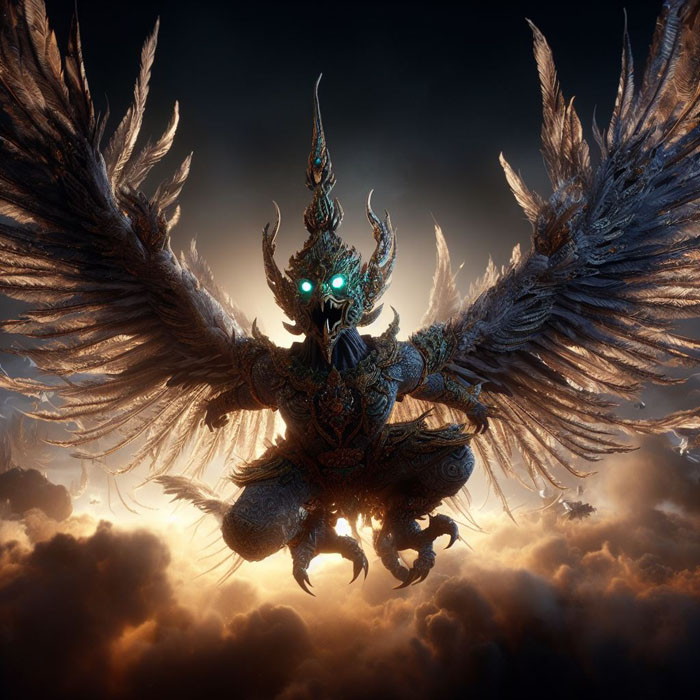
Here are some key aspects of the Thai Garuda:
- Symbol of Royal Authority: The Garuda has been used as a symbol of the Thai monarchy for centuries. It represents the king’s authority and power and is prominently featured in the national emblem of Thailand.
- Protector of Buddhism: The Garuda is considered a guardian and protector of Buddhism in Thai culture. It is often depicted carrying a small Buddhist stupa on its back, symbolizing its protective role.
- Powerful and Noble: The Thai Garuda is seen as a symbol of strength, virtue, and nobility. It is often associated with justice and righteousness.
- Cultural Significance: The Garuda appears in various forms of Thai art, including architecture, sculptures, and decorative motifs. It is commonly found in temples and other religious sites, as well as in Thai dance and traditional performances.
- Mythological Origin: The Garuda has its roots in Hindu mythology but has been incorporated into Thai culture and Buddhism. In Hinduism, the Garuda is the mount of Lord Vishnu, one of the principal deities in Hinduism.
- Festivals and Ceremonies: The Garuda is sometimes featured in Thai festivals and ceremonies, especially those related to religious and royal events.
The Thai Garuda is a symbol of honor, protection, and the connection between the monarchy and Buddhism in Thailand. It is a powerful and enduring emblem of Thai culture and heritage.
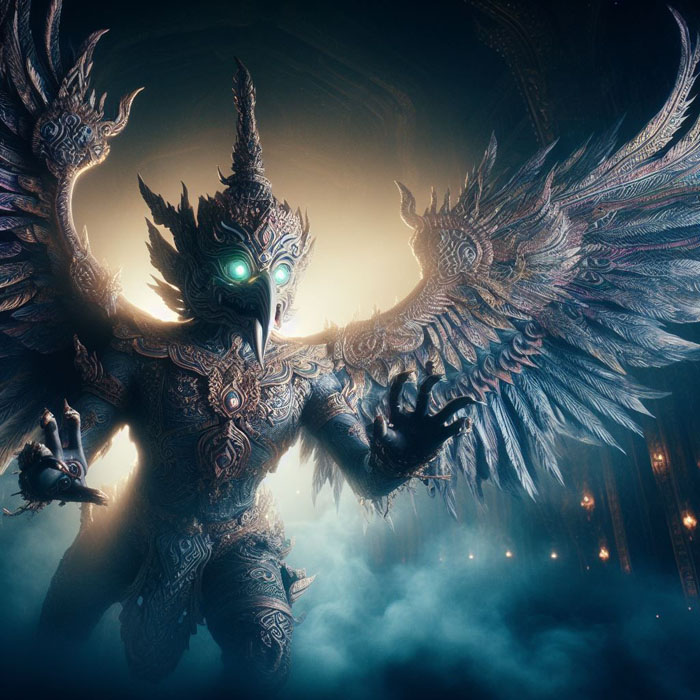
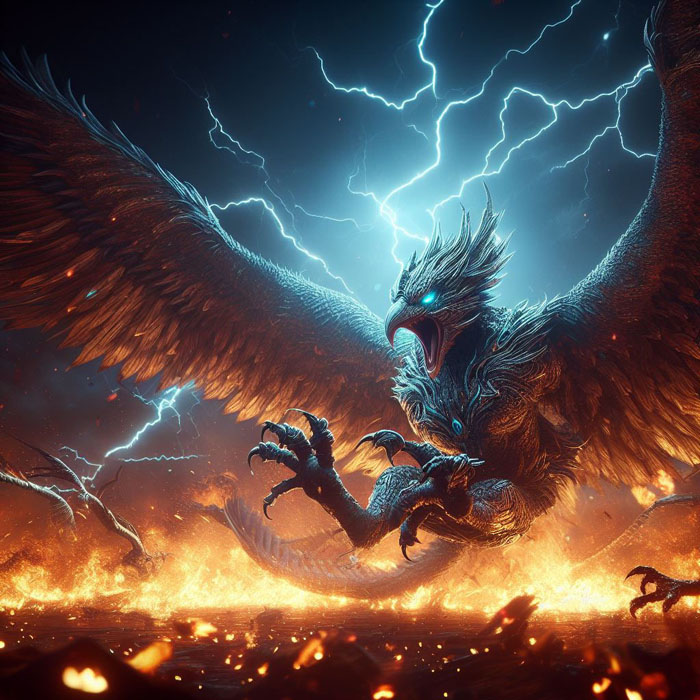
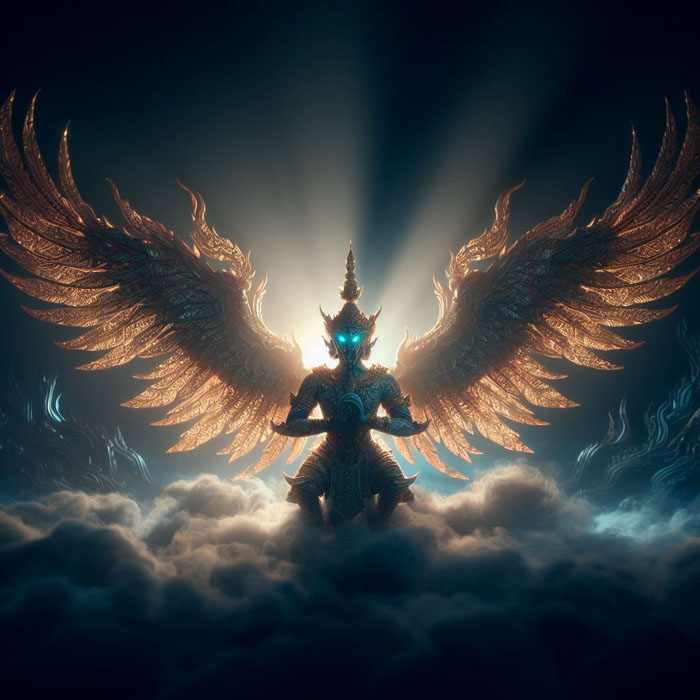
You can learn more Garudas Prompts Here
Link :>

